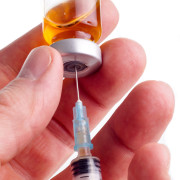Medical Terrorism: The Sprint Study
What is it about September 11th? On 9-11 of 2015, another massive attack was made on the United States. Only this time, the target was everyone over 50 and the enemy was our own government’s “experts.”
That’s the date the National Institutes of Health delivered a press release to the world extolling the virtues of the forthcoming SPRINT study; proclaiming that “intensive” pharmaceutical blood pressure management to new, lower numbers could save lives and lower rates of cardiovascular events by “almost a third.”
Sorry – but I have to call bullshit. Those statements are true only if you ignore the damage the drugs themselves do. Now that the study is actually out, let’s have a look at real data.
The study followed 9361 participants. The qualification criteria for the study would have eliminated almost 92% of us from being involved. But, you can bet that the “results” will be pushed to cover everyone. That’s where fear will be used to manipulate the masses into taking massive amounts of extra drugs. I call that terrorization.
To quote the study itself, “the number needed to treat with a strategy of intensive blood-pressure control to prevent one primary outcome event was 61, and the number needed to treat to prevent one death from any cause was 90.” My calculator says that 1 in 61 is 1.64%, and 1 in 90 is 1.1%!
So how do you take numbers like these and turn them into a 25% reduction in risk? Your take a 4% risk factor and drop it to 3%. In “pharmaceutical selling terms”, that’s a 25% risk reduction. Still looks like a 1% difference to me.
Using their own math structure, the study showed an 88% increase in “Serious Adverse Events” from the multi-drug therapies the participants were put on! (2.5% to 4.7%) And, that is only comparing “intensive” regimens to standard pharmaceutical protocols.
What did these “Serious Adverse Events” include? Acute kidney injury, complete renal (kidney) failure, participants passing out, (syncope – never a good idea if you happen to be driving) etc., etc. If you look at the multitude of drugs used on the participants – which of course I did and you can too (1) – the list of negative side effects for these compounds includes just about every form of physical failure you can imagine.
So what can you do if your blood pressure is high? Think of it as an indicator that your body chemistry is off and work on that. There are simple things that can have a significant impact and improve your overall health at the same time. Here are a few examples:
- Supplement your magnesium intake. Men need 420 mg per day and women need 320 mg a day, but almost no one gets that in our regular diet. Multiple studies have shown that magnesium supplementation will lower your blood pressure. In addition, a study published in the American Journal of Clinical Nutrition showed that every 100 mg of increased magnesium intake drops your risk of stroke 9%.
- Crank up your Vitamin C levels. Numerous studies (2,3,4) have shown that blood levels of Vitamin C are inversely related to blood pressure. As C goes up, blood pressure comes down.
- Optimize your Vitamin D levels. A meta-study (5) of over 155,000 people delivered at the European Society of Human Genetics in 2013 showed “…those with high concentrations of 25-hydroxyvitamin D (25(OH)D) had reduced blood pressure…”
Of course, these simple solutions cannot work as well for you if your overall body chemistry is off because of hormone deficiencies or imbalances. So there’s a #4.
- Optimize your hormone levels and balance.
Your hormones drive the whole “bus” if you will, and these supplements are the equivalent of just one wheel. But even at that, these suggestions give you a place to start and will deliver more than the 1-2% advantage shown in the SPRINT study. They’ll also deliver multiple health benefits and you certainly won’t experience any deadly side effects.


